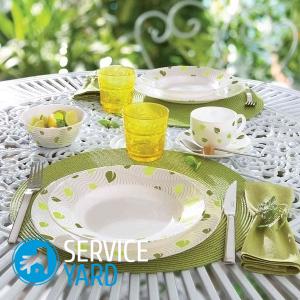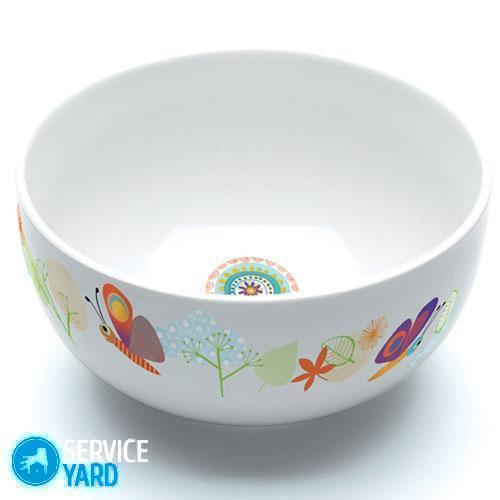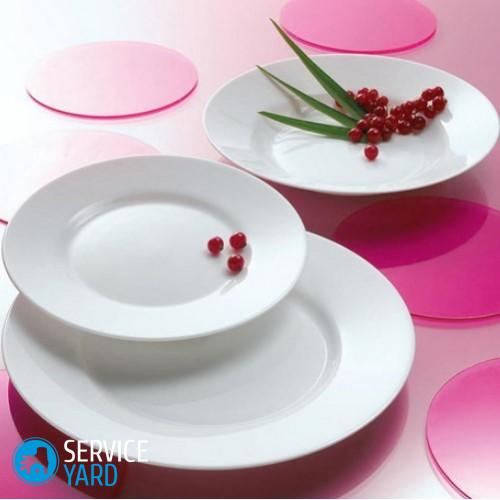Safe dishwashing detergents

No one in the world can say that he does not need to wash dishes every day after a meal. The detergents we use are far from always safe for our health. Therefore, the question of what kind of safe dishwashing detergent generally exists and whether it is possible to make such an agent at home is sometimes very acute. If you come to just such a situation or are still in the process of thinking about whether to abandon such convenient household chemicals, you will find a solution after reading this article.
to contents ↑A healthy couple - soda + mustard
Baking soda is the most popular plaque cleaner on a variety of dishes and cutlery. Soda has a crystalline structure and has a soft abrasive property, cleans to shine, as well as squeak.
There are two ways to use baking soda:
- Dissolve the powder in water, wash the dishes in it, if necessary - soak the dishes in it first.
- Pour baking soda onto the dishwashing sponge and wipe off any dirt. After treating the dishes with soda, rinse them thoroughly and wipe them dry.
Important! Soda is a safe dishwashing detergent that perfectly copes with grease and any other impurities. But to clean dishes containing non-stick coating, it can not be used.
If your house did not find baking soda, then mustard powder can replace it, since they have similar properties. Use the powder in the same way as soda: in solution or directly when applied to a sponge.
 It should be noted that mustard is a little more expensive than soda, but crystal shine and removal of fat are provided to you.
It should be noted that mustard is a little more expensive than soda, but crystal shine and removal of fat are provided to you.
Vinegar for absolute radiance
Table vinegar is another resident of any kitchen. He is always ready to help in the fight against the pollution of dishes.
Important! You can not use it for daily washing of dishes, as well as cutlery. But it is vinegar that is the best safe means for washing dishes, if it is necessary to restore the former shine to glass cutlery, relieve them of boring plaque or disinfect.
You can prepare vinegar water using the following proportions:
- 1 teaspoon of warm water;
- 50-200 milliliters of table vinegar.
Important! The amount of vinegar depends on your purpose: 50 milliliters will be enough to give the glass shine, and more needs to be taken for disinfection.
To add radiance to the appliances, rinse with clean glass objects in vinegar water.
to contents ↑Preparing a dishwashing detergent at home
If you want to wash the dishes with gel or liquid familiar to everyone, rather than soaping the sponge with household soap and sprinkling it with soda, you can make such a safe dishwashing detergent yourself.
Important! This gel will turn out quite effective and not so expensive. It can be stored for a long time, which is why it will not need to be re-cooked every time before starting to wash the dishes.
Structure
You will need these components:
- water - 0.5 liters;
- Laundry soap 72% - ⅛ piece;
- liquid glycerin - 5 teaspoons;
- alcohol tincture of calendula - 1 tablespoon;
- medical alcohol - 4 tablespoons.
- bottle with dispenser - for storage and use of ready-made safe dishwashing detergent.
Cooking:
- Grind laundry soap with a grater or using a sharp knife.
- Transfer the resulting chips to a saucepan.
- Put a pot of soap in a water bath.
- Gradually add water to it. The result should be a homogeneous mass.
- Add the remaining ingredients from our list.
- Mix thoroughly and pour the resulting mixture into a bottle.
- Allow to cool.
Safe dishwashing detergent is ready to use!
to contents ↑Popular household chemicals - is it safe?
If, despite all the assurances of harm, you cannot refuse household chemicals, we suggest that you familiarize yourself with the rating of the most popular dishwashing detergents.
“Fairy” and “Myth” by Procter & Gamble
The washing products of the international concern Procter & Gamble are very widespread, namely such as “Myth” and “Fairy”.
Manufacturers give them for sale with a variety of fragrances. For example: with the smell of lemon, berries, orange, apple. In a wide range of dishwashing detergents, you can find those where phylloquinone E, a substance from chamomile, is added to protect hands.
“Pril” by Henkel
Henkel manufactures Pril and Pemolux detergents. “Pril” is in higher demand.
“Pril” is a dermatologically proven safe dishwashing detergent with a neutral pH. It fights effectively enough with pollution in the form of fat, and does not contain any dyes. It does not irritate or dry the skin of the hands. It has a good cap for dosing the product. The composition includes a xerophyte-faith link that does not violate the skin barrier.
Important! The advantage of this detergent is that it is cheap, and the effect of it is like an expensive detergent.
Dosia by Reckitt Benckiser
Reckitt Benckiser is a world-famous company that sells household goods in more than 60 countries. A dishwashing detergent “Dosia” is also offered at the choice of consumers.
The composition of this tool:
- Surfactants, mineral salts, alkali - for better pollution control.
- Dyes - for the desired color.
- Complexing agents - for softening water.
- Sodium laureth sulfate - to form a foam.
Important! To protect your hands from unwanted effects, glycerin, natural plant extracts, xerophyte-faith are added to the detergent.
Dishwashing detergent “Morning Fresh”
A considerable number of positive reviews received the dishwashing detergent “Morning Fresh”.
Composition: water, perfume, 15-30% anionic surfactants, dyes and preservatives. It foams well and also protects hands.
Detergent for dishes "Lapis Lazuli" from TM "Aist"
“Lapis lazuli” is a dishwashing detergent made from:
- faience;
- crystal;
- porcelain;
- glass;
- ceramics;
- plastics.
Important! This remedy from TM “Aist” was produced according to the specification that was developed in 2002. The latest development, according to the manufacturer, allows you to even wash deep fat and protect your hands. The product is specially designed for sensitive skin of the hands:
- phylloquinone F - softens the skin and heals microcracks;
- Xerophyte substance - does not allow to lose moisture.
Output
Of course, the natural in such dishwashing detergents is quite small. But all harmful surfactants, perfumes, dyes and other ingredients are present in acceptable proportions. Therefore, in principle, they can be considered relatively safe dishwashing detergents.
to contents ↑Important! If you still decide to use any of the proposed dishwashing detergents from this rating, try to better rinse each kitchen item after cleaning it with running water. So you reduce the risk of allergic reactions and harmful chemicals in your body.
Grandma's dishwashing methods
For those who decide to give preference to the means provided to us by nature itself, we offer an additional list of possible options.
Wood ash and sand
The first means for washing plates and pots were improvised means - sand and ash.Those who at least once relaxed in the nature without taking detergents or went camping, know that it is wood ash and sand that perfectly wash the fattest and smoked cauldrons or barbecues. This method of washing dishes is quite good, but not suitable for everyday cleaning, because you won’t drag mountains of sand home.
Grated potato
Gently wash dishes with a narrow neck, such as a vase, will help grated potatoes. A potato cut in half will help clear a burnt pan.
Freezing
A fat-covered pan can easily be cleaned without using water at all if you put it in the freezer for 30 minutes. After this procedure, the fat is simply removed with paper towels or napkins, without leaving the slightest trace.
to contents ↑Stock footage
Now you have an idea of what safe means can be used for washing dishes. We hope we have helped you make the right choice.
- How to choose a vacuum cleaner taking into account the characteristics of the house and coatings?
- What to look for when choosing a water delivery
- How to quickly create comfort at home - tips for housewives
- How to choose the perfect TV - useful tips
- What to look for when choosing blinds
- What should be running shoes?
- What useful things can you buy in a hardware store
- Iphone 11 pro max review
- Than iPhone is better than Android smartphones




